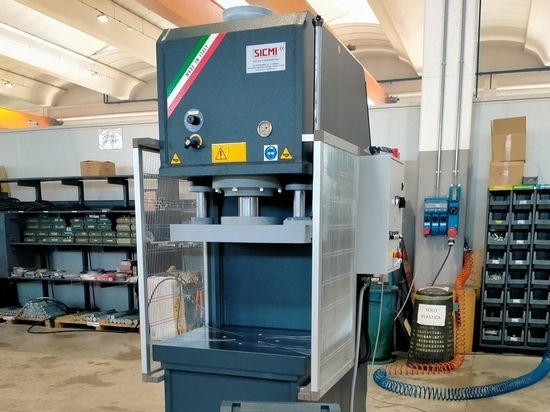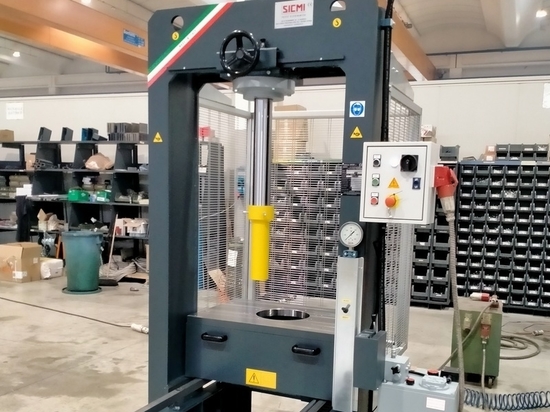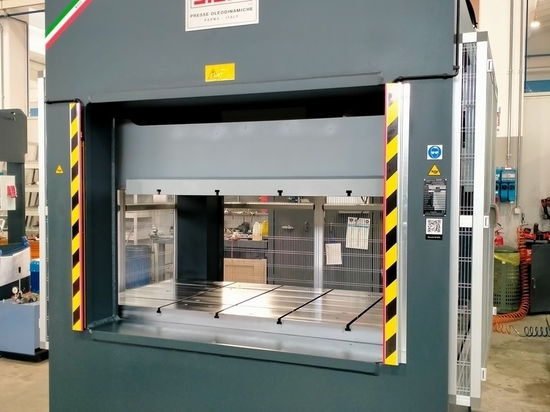
#Product Trends
Electro-hydraulic straightening press with sliding portal
The electro-hydraulic straightening press with sliding gantry is the ideal machine for straightening, levelling and smoothing sheet metal and materials in general.
The electro-hydraulic straightening press with sliding gantry is the ideal machine for straightening, levelling and smoothing sheet metal and materials in general.
By moving the portal longitudinally, combined with the transverse movement of the hydraulic cylinder, it is possible to reach any point of the workbench without having to move the sheet metal.
The press is equipped with a laser device mounted near the hydraulic cylinder, which measures in real time the distance that separates it from the work surface and therefore communicates to the operator whether the sheet metal to be straightened is straight or whether it needs further pressing.
The press has a 6000 x 3000 mm long workbench and is equipped with 19 T-slots to facilitate sheet metal fixing. The floor is completely milled on the surface to ensure excellent flatness and is divided into 3 parts. In this way the customer will have the possibility in the future to replace only one of the parts of the floor and not the entire platform.
All the movements of the press are managed by a radio control that allows the operator to move freely around the press and closely monitor the pressing operations.
A digital display shows in real time the stroke of the cylinder, the pressure exerted at that moment and the value of the deformation of the piece measured by the laser.
This electro-hydraulic straightening press with sliding gantry develops a power of 400 tons and has a distance between the stem and the workbench of 1000 mm.
The hydraulic piston descent speed is 30 mm/sec, while the working speed is 7 mm/sec.
The 12 kW hydraulic power unit is mounted above the upright, thus optimising space within the customer’s workshop.
The movement area of the portal is protected by the presence of 4 photoelectric barriers mounted on the sides of the press, which block the movement of the bridge in the event that the operator places himself between the photocells of the light barriers.





